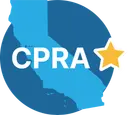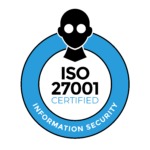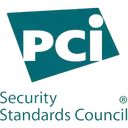HIPAA compliance stands as a cornerstone regulatory framework for healthcare organizations and their business associates. Understanding the financial implications of preparing for and undergoing HIPAA audits is crucial for proper budgeting, resource allocation, and compliance strategy development. Without proper preparation, organizations risk costly violations, reputational damage, and operational disruptions.
The Health Insurance Portability and Accountability Act (HIPAA) requires covered entities and business associates to implement robust safeguards for protected health information (PHI). With the Office for Civil Rights (OCR) actively enforcing these requirements through investigations and audits, organizations must understand both the direct and indirect costs associated with achieving and maintaining compliance.
This guide provides a comprehensive breakdown of HIPAA audit costs, helping organizations of all sizes—from startups to enterprise health systems—navigate the financial aspects of compliance. We’ll explore typical cost ranges based on organization size, examine specific cost components that contribute to your compliance budget, identify key cost drivers that may impact your particular situation, and offer practical strategies to optimize your compliance spending.
What you’ll learn
In this comprehensive guide, we’ll cover:
- Typical cost ranges by organization size: Understand what startups, mid-market companies, and enterprise organizations typically spend on HIPAA audit preparation and execution.
- Cost components and their relative weight: Examine the specific line items that make up your HIPAA compliance budget, from risk assessments to technology upgrades.
- Key cost drivers: Identify the factors that can significantly increase or decrease your audit costs, allowing for more accurate budgeting.
- Real-world scenarios: See how HIPAA audit costs apply to specific organizational profiles like telehealth startups, multi-location practices, and health systems.
- Cost-saving strategies: Discover practical approaches to reduce compliance expenses without compromising quality or increasing risk.
- Market trends and considerations: Learn about emerging factors affecting HIPAA audit costs, including regulatory changes and enforcement patterns.
Whether you’re preparing for your first HIPAA audit or looking to optimize your existing compliance program, this guide will help you understand, anticipate, and effectively manage the financial aspects of HIPAA compliance. Compliance shouldn’t be a budgetary mystery—with proper planning and insight, you can achieve and maintain HIPAA compliance while controlling costs and protecting your organization.
Cost components
HIPAA compliance costs aren’t one-time expenses. They encompass several key categories that organizations need to budget for throughout their compliance journey.
Readiness assessments form the foundation of HIPAA compliance efforts. These typically range from $5,000 for small organizations to $40,000+ for larger enterprises. A thorough assessment identifies gaps in your current practices and provides a roadmap for remediation activities.
Remediation work addresses the gaps identified during your assessment. This can range from relatively minor fixes costing $1,000 to major architectural changes exceeding $200,000. For startups and small practices, remediation often involves policy development, basic technical controls, and staff training. Larger organizations may need to implement more complex solutions like network segmentation or encryption overhauls.
Auditor fees represent the cost of validation by qualified third parties. Whether pursuing a formal HIPAA audit or a more comprehensive certification like HITRUST, expect to spend $15,000 to $200,000+ depending on your organization’s size and complexity. These costs typically include assessor time, documentation review, and final reporting.
Compliance tools and platforms are increasingly essential for ongoing management. Modern compliance automation solutions start around $99/month for very small organizations and can scale to $10,000-$100,000+ annually for enterprise deployments. These tools streamline evidence collection, policy management, and audit preparation.
Internal staff time often represents the largest hidden cost of compliance. For healthcare systems, staff salaries can account for the majority of compliance expenditures. Even smaller organizations divert significant employee hours from core business functions to compliance activities. This opportunity cost should be factored into any comprehensive budget.
Factors influencing cost
Several key factors determine where your organization will fall within the wide range of potential compliance costs.
Organization size and complexity directly impact almost every aspect of HIPAA compliance costs. A 10-person telehealth startup with limited PHI might spend $25,000-$70,000 initially, while a multi-site healthcare practice could invest $75,000-$400,000. Enterprise health systems pursuing comprehensive compliance programs often allocate budgets exceeding $250,000 and sometimes reaching into the millions.
The type and volume of PHI you handle significantly affects your control requirements. Organizations managing highly sensitive information like mental health records, genetic data, or large volumes of patient images face more stringent (and costly) protection requirements than those with limited PHI exposure.
Your existing security maturity determines your starting point. Organizations with robust cybersecurity frameworks already in place typically face lower remediation costs. Those starting from minimal security foundations will need to invest more heavily in both technical controls and program development.
Geographic factors introduce notable variations in compliance spending. Labor costs for security professionals vary significantly between regions, affecting both internal staffing and consultant rates. Additionally, state-specific requirements in places like New York, California, and Washington can impose additional compliance obligations beyond federal HIPAA standards.
The need for technical upgrades often dominates remediation budgets. Organizations requiring significant investments in security information and event management (SIEM) systems, encryption solutions, multi-factor authentication, or network segmentation will see substantially higher costs than those needing primarily policy and procedural updates.
The regulatory scope you’re targeting affects both initial and ongoing costs. Organizations pursuing multiple frameworks simultaneously (such as HIPAA plus HITRUST or SOC 2) will face higher assessment costs but may achieve efficiencies through coordinated evidence collection and control implementation.
Example scenarios
Healthcare startup with 15 employees. A telemedicine startup handling protected health information might spend between $25,000-$70,000 for their initial HIPAA compliance effort. The largest components typically include a gap assessment ($10,000-$18,000), penetration testing ($6,000-$20,000), policy development ($1,000-$8,000), and a compliance platform subscription ($1,000-$6,000 annually). Internal staff will also dedicate 200-600 hours to evidence collection and remediation work. Most startups can complete initial compliance within 1-3 months.
Multi-specialty medical practice with 150 employees across three locations. This organization faces more complex compliance needs, with costs ranging from $75,000-$400,000. Their budget would typically include a comprehensive risk analysis ($15,000-$50,000), technical remediation work like implementing network segmentation and multi-factor authentication ($20,000-$150,000), security testing ($8,000-$30,000), and possibly a formal third-party assessment ($30,000-$80,000) if required by business partners. The timeline extends to 2-6 months or longer, depending on remediation requirements.
Regional hospital system pursuing HITRUST certification. Large healthcare enterprises pursuing rigorous compliance frameworks face substantial investments. A hospital system might budget $250,000-$5,000,000+ for a comprehensive program including security infrastructure (SIEM implementation, identity controls, network segmentation), policy development, and staffing. The HITRUST certification process alone typically costs $17,000-$100,000+ in assessor fees plus $9,000-$30,000 for the MyCSF platform subscription. Ongoing penetration testing and monitoring add $50,000-$500,000 annually. These organizations should plan for a 6-18 month implementation timeline.
Mental health provider with 30 clinicians. A specialized provider might face costs in the $40,000-$120,000 range. Key expenses include risk assessment ($10,000-$25,000), technical controls for electronic health record security ($15,000-$50,000), staff training programs ($2,000-$5,000), and compliance documentation ($5,000-$15,000). The practice would likely spend 3-5 months implementing required controls and policies. Annual maintenance costs typically run $15,000-$40,000 for ongoing monitoring, training, and documentation updates.
Healthcare SaaS vendor handling PHI for customers. Technology companies serving healthcare clients often face stringent security requirements. A SaaS vendor might invest $80,000-$250,000 in their compliance program, including cloud infrastructure security controls ($20,000-$75,000), application security testing ($15,000-$40,000), third-party audit fees ($25,000-$60,000), and compliance platform costs ($5,000-$15,000 annually). The company should anticipate 4-8 months to implement comprehensive controls and complete a formal assessment to satisfy customer requirements.
Cost-saving tips
Start with a risk-based approach to avoid wasted investments. Conducting a thorough risk analysis before diving into compliance efforts helps you identify and prioritize the highest-risk areas first. This strategic approach ensures you’re not spending resources on low-impact controls while neglecting critical vulnerabilities that could lead to breaches or enforcement actions.
Leverage compliance automation to reduce manual effort. Modern compliance platforms can dramatically reduce the time spent collecting and organizing evidence. By automating repetitive tasks like policy distribution, training tracking, and evidence collection, your team can focus on more strategic work while reducing the labor costs that often represent the largest portion of compliance spending.
Bundle your compliance efforts across frameworks. If your organization needs to comply with multiple standards beyond HIPAA (such as SOC 2 or HITRUST), look for opportunities to conduct combined assessments. Many controls overlap across frameworks, and coordinated audits allow you to reuse evidence and documentation, potentially saving 30-40% compared to separate audit processes.
Consider a readiness assessment before formal audit. Having an experienced consultant conduct a pre-audit readiness assessment can identify gaps early when they’re less expensive to fix. This preparation prevents the costly scenario of bringing in auditors only to discover significant remediation needs that extend timelines and increase total costs.
Optimize your audit scope through proper scoping and sampling. Work with your auditor to define a focused, risk-appropriate scope that doesn’t unnecessarily expand to systems with limited PHI exposure. Using statistically valid sampling approaches for multi-site operations can significantly reduce assessment time and costs while maintaining audit integrity.
Standardize your vendor management process. Create a centralized system for managing Business Associate Agreements and vendor risk assessments. Having templated BAAs, a streamlined review process, and organized documentation reduces legal costs and simplifies evidence gathering during audits.
Build compliance into your operational processes. Rather than treating compliance as a separate activity, integrate privacy and security requirements into your standard operating procedures. This approach reduces the need for separate compliance work and helps your organization maintain continuous compliance rather than scrambling before audits.
Conclusion
Achieving and maintaining HIPAA compliance doesn’t have to break the bank when approached strategically. By understanding the true cost drivers, implementing automation, and focusing on high-impact controls, organizations of all sizes can build effective compliance programs that protect patient information while managing expenses.
The financial impact of non-compliance—including potential fines, remediation costs, and reputational damage—far outweighs the investment in a thoughtful compliance program. A proactive approach not only reduces your risk exposure but often results in operational improvements and greater efficiency.
Thoropass helps organizations streamline their HIPAA compliance journey through our purpose-built platform that automates evidence collection, simplifies control mapping, and provides continuous compliance monitoring. Our approach reduces manual effort by up to 70% while ensuring you’re always audit-ready—not just during assessment season.
We understand the compliance burden healthcare organizations face, which is why we’ve designed our solution to minimize costs while maximizing protection. Schedule a discovery session today to learn how Thoropass can help you achieve HIPAA compliance more efficiently and cost-effectively than traditional approaches.

Related Posts
Stay connected
Subscribe to receive new blog articles and updates from Thoropass in your inbox.
Want to join our team?
Help Thoropass ensure that compliance never gets in the way of innovation.












.png)